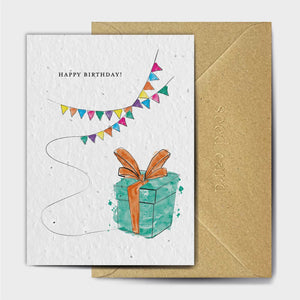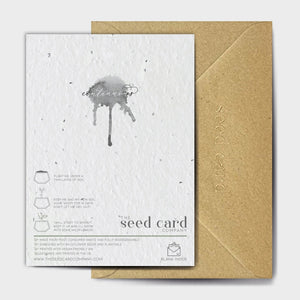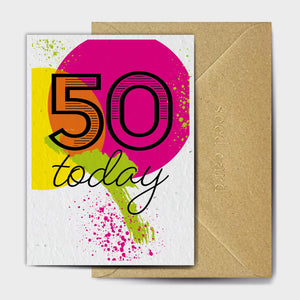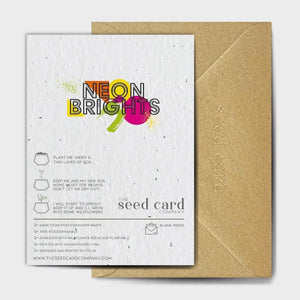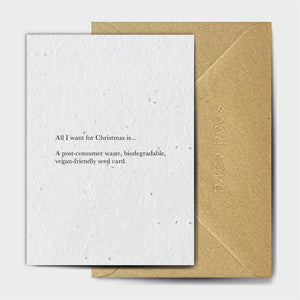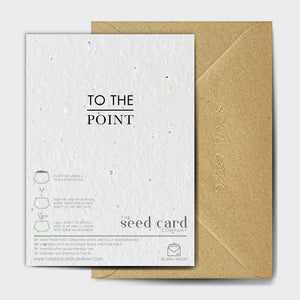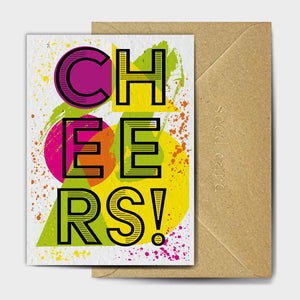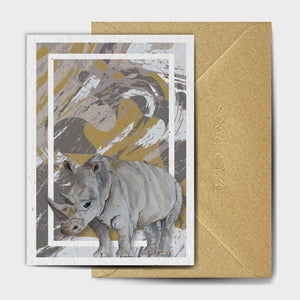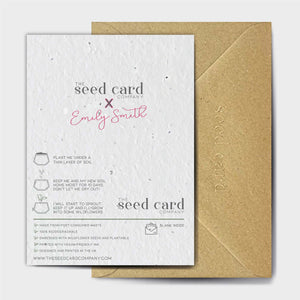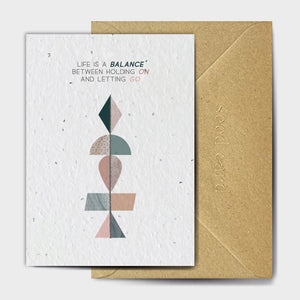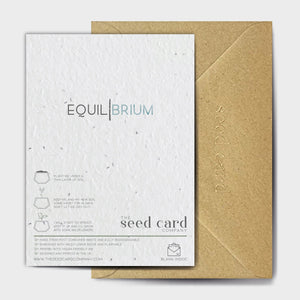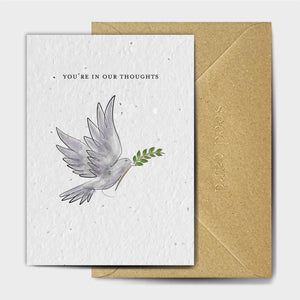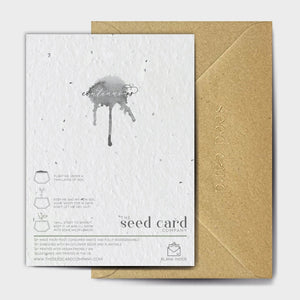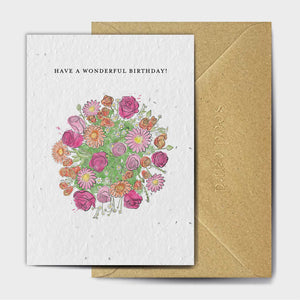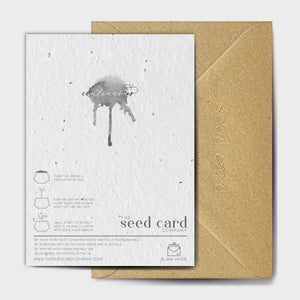What is Seed Card?
The fact that you have made it onto our blog tells us that you must be a big fan of what we are doing. Or at very least are a little eco-curious. It is a common thing nowadays, with buzz words like sustainability, eco-friendly, living greener and the like flying around the news and social media, there are a lot of people finding themselves eco-curious. It is one of the reasons that we started this venture and something that we love to speak to people about. Everybody from all walks of life send greetings cards. Some more than others, but throughout the year you will at least be buying birthdays cards for your friends or significant other and more than likely some occasion cards too. A great way to start your journey on living a little greener and doing your bit to help the planet would be to buy one of our greetings cards. Aside from the next level design, the likes of which you have never seen(!), all of our greetings cards are printed on our seed card material. So perhaps it is time we actually looked into this miracle stuff and we explained what it actually is.

Seed card or seed paper is a 100% recycled card material. It is made entirely from post-consumer waste. This means waste paper is collected from various outlets and processed back into pulp. The main point to take home here is that no new trees were cut down or harmed to create this card. It is entirely made from old materials so it has zero detrimental affect on the worlds forests. It is also completely biodegradable. This means that over time, whether you decide to plant it or it ends up in the (recycling) bin it will eventually decompose into essentially nothing. What is left however is those little seeds that you can see and feel in the card. These are wildflower seeds, added to the card during the pulping process. Once the wildflower seeds have been added the card pulp is pressed out into sheets on large wooden framed racks, which is all still done by hand! This is why the card has a rough, uneven texture. Think of it as added character, especially compared to that boring super smooth stuff you see everywhere. Get off your high horse processed cards and papers. Hand-made is where it is at.

Once the pressed card/paper sheets are dry they are then cut down to size and voila, you have finished seed card. One thing that sets us apart from the rest (as well as our 6 dogs, name us another start-up that has 6 office dogs-even if you can our pooches are way better…in our opinion) is that we can also add colour to our seed card. When the material is still in the pulping process dyes can be added in a variety of colours. These dyes are completely earth friendly and are mainly made from vegetables as well as a few other things to make sure we achieve the best results we can. Pinky promise though, none of these added things are nasties.

So let’s quickly talk about those seeds. The seeds we use are called wildflower seeds. This is a collective term for 6 different types of flowers. The wildflowers in our mix are: Clarkia, Bird’s Eye, Black Eyed Susan, Snapdragon, Sweet Alyssum. They all completely different from each other and there is no rule as to which are included in your Seed Card Company purchase. You should get lucky and have them all as the seeds are mixed in properly, but maybe you should get yourself a few cards and try and collect them all. We have images of each of them at https://seed-card-company.myshopify.com/pages/about but if you don’t want to click away, here is a guide to help identify your wildflowers:  Catchfly: A pink-purple flower that is covered in tiny sticky hairs. This is why it is called a Catchfly. It is actually a nocturnal flower. The petals remain rolled up during the day and then open out in the evening and remain so over night.
Catchfly: A pink-purple flower that is covered in tiny sticky hairs. This is why it is called a Catchfly. It is actually a nocturnal flower. The petals remain rolled up during the day and then open out in the evening and remain so over night.
Clarkia: A beautiful flower with varying shades of pink. They were first discovered in North America before being brought over to the UK. They grow best in full sun or with a little shade and are not a fan of having wet feet so once you have sprouts do not over water that soil!
Bird’s Eye: These little guys are tiny flowers. They love the sun and are a stunning brilliant blue colour. They tend to flower between April and July and can often be found in woodland and meadows.
Black Eyed Susan: You may look at these and think they look like mini Sunflowers. That is because they are from the same family. They are larger than a lot of wildflowers and can grow to 7 feet in the right conditions.
Snapdragon: Often growing to at least half a meter tall in the right conditions these wildflowers have a striking appearance. The flowers are often a vibrant shade of fuchsia pink and the flowers spiral around the stem of the plant. The best thing is that they are a Bumble Bee’s favourite so get planting!
Sweet Alyssum: Lastly we have a little white flower. They often grow in bunches and have a gorgeous fragrance. Believe it or not they are a member of the mustard family. They grow in bunches that may get to 3 to 6 inches tall. They work as great filler in hanging baskets and can self sow so you could have new flowers year on year with no extra planting.

Natures pollinators absolutely love them all – here’s looking at you bees! So get sending, get planting and get growing!


